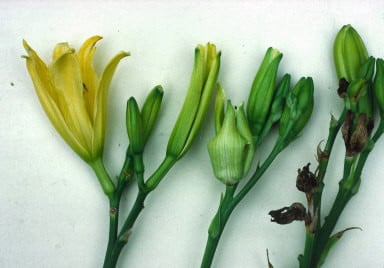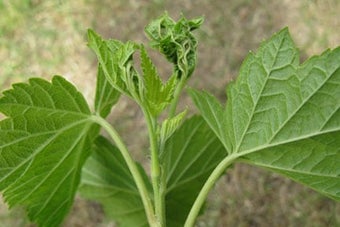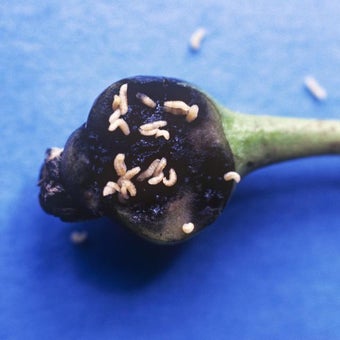
Quick facts
Common name - Hemerocallis gall midge, daylily gall midge
Scientific name - Contarinia quinquenotata
Plants affected - Daylilies (Hemerocallis species and cultivars)
Main symptoms - Abnormally swollen flower buds that fail to open
Caused by - Larvae of a small fly
Timing - Late May-early July
What is hemerocallis gall midge?
Hemerocallis gall midge is a tiny fly that lays eggs on the developing flowers of day lilies. The feeding activities of the larvae inside the buds cause abnormal development and these buds fail to open.
Gall midges are a family of flies, the Cecidomyidae, of which over 600 species are found in Britain. As adults most are small brown or black flies, which do not bite. As the name suggests, many species feed as larvae within plant tissues, causing galling and distortion. Some, however, are predatory on aphids and mites, whilst others feed on rust fungi.
Survey
Seen the hemerocallis gall midge or its effects? We would like to know.
As part of RHS research we would like to know where the hemerocallis gall midge has been seen.
Please submit your records via our hemerocallis gall midge survey (expected time to complete survey = two minutes).
Thank you to everyone who has submitted records so far. Discover other sightings you can report to help our research here.
Symptoms
If the foliage of daylilies appears normal but the flowers abnormal in the ways described below, hemerocallis gall midge is almost certainly to blame:
- Affected flower are shorter and much fatter than healthy daylily flower buds
- Such buds fail to open and either dry up or rot
- Numerous almost transparent maggots, up to 3mm long, may be found inside the buds, crawling around in a watery liquid
The gall midge affects flower from late May to early July. Later-flowering varieties are less likely to be affected.
Management
Hemerocallis gall midge affects the flowers but not the general health of host plants.
Pick off and destroy galled as soon as they are seen. Encourage other gardeners who grow daylilies in nearby gardens to do the same. Damage from this insect comes to an end by mid-July.
Hemerocallis cultivars that have all or most of their flowering period after the end of gall midge’s egg-laying period (May-July) are often unaffected.

Biology
Hemerocallis gall midge has one generation a year. Adult midges emerge in May-June and lay eggs on the developing flower of daylilies.
The larvae feed inside the buds, causing them to develop abnormally. Instead of being long and slender, flower buds are shortened and have an enlarged conical shape. The larvae are up to 3mm long and almost transparent, which can make them difficult to see in the watery liquid that accumulates between the petals in the base of the . Nearly 400 larvae have been found in a single flower bud; this is likely to be the progeny of more than one female midge.
When fully fed, the larvae go into the soil, where they overwinter inside silk cocoons. Galled flower buds either rot or dry up without opening.






